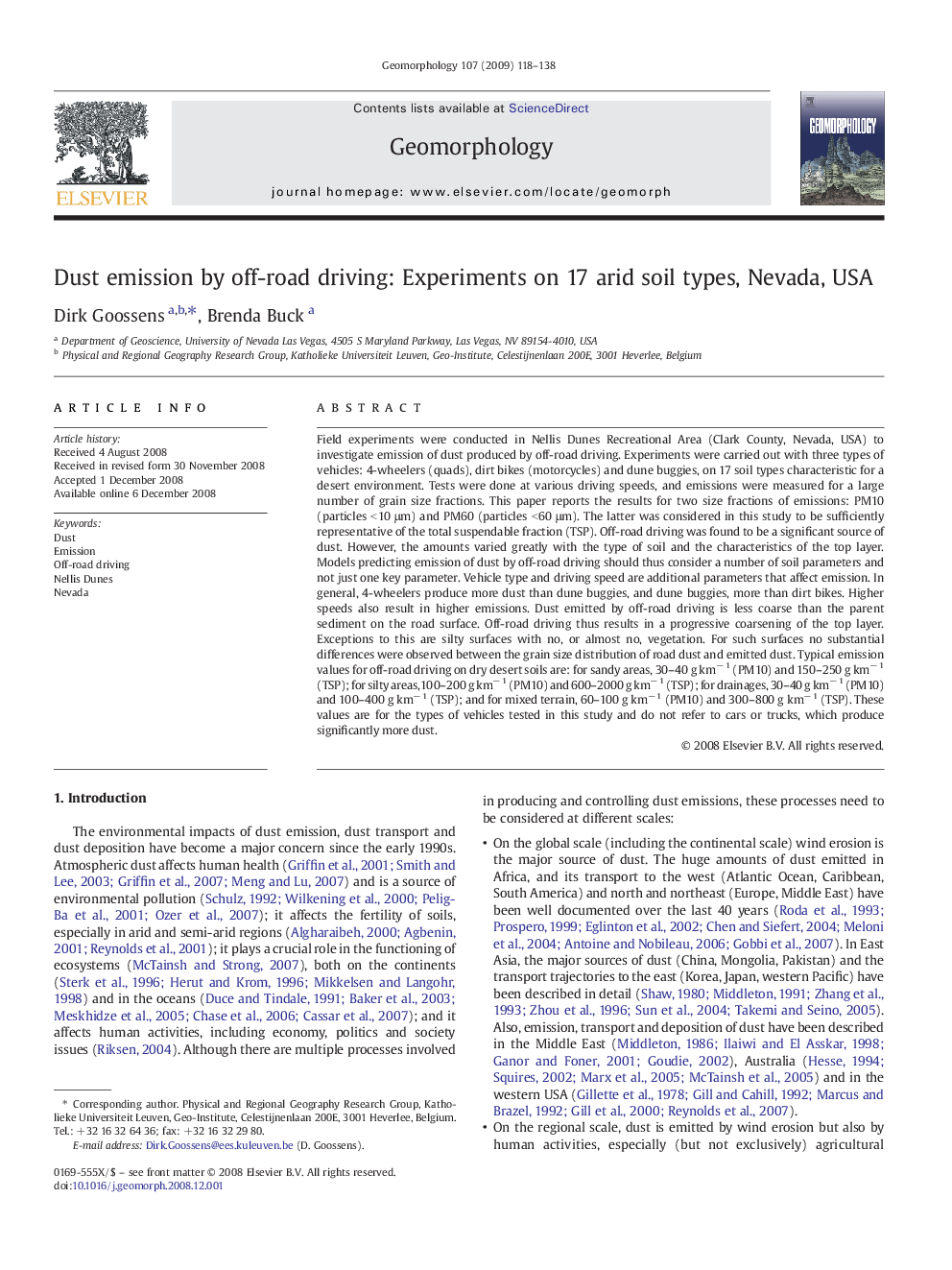| کد مقاله | کد نشریه | سال انتشار | مقاله انگلیسی | نسخه تمام متن |
|---|---|---|---|---|
| 4686394 | 1635543 | 2009 | 21 صفحه PDF | دانلود رایگان |

Field experiments were conducted in Nellis Dunes Recreational Area (Clark County, Nevada, USA) to investigate emission of dust produced by off-road driving. Experiments were carried out with three types of vehicles: 4-wheelers (quads), dirt bikes (motorcycles) and dune buggies, on 17 soil types characteristic for a desert environment. Tests were done at various driving speeds, and emissions were measured for a large number of grain size fractions. This paper reports the results for two size fractions of emissions: PM10 (particles < 10 μm) and PM60 (particles < 60 μm). The latter was considered in this study to be sufficiently representative of the total suspendable fraction (TSP). Off-road driving was found to be a significant source of dust. However, the amounts varied greatly with the type of soil and the characteristics of the top layer. Models predicting emission of dust by off-road driving should thus consider a number of soil parameters and not just one key parameter. Vehicle type and driving speed are additional parameters that affect emission. In general, 4-wheelers produce more dust than dune buggies, and dune buggies, more than dirt bikes. Higher speeds also result in higher emissions. Dust emitted by off-road driving is less coarse than the parent sediment on the road surface. Off-road driving thus results in a progressive coarsening of the top layer. Exceptions to this are silty surfaces with no, or almost no, vegetation. For such surfaces no substantial differences were observed between the grain size distribution of road dust and emitted dust. Typical emission values for off-road driving on dry desert soils are: for sandy areas, 30–40 g km− 1 (PM10) and 150–250 g km− 1 (TSP); for silty areas, 100–200 g km− 1 (PM10) and 600–2000 g km− 1 (TSP); for drainages, 30–40 g km− 1 (PM10) and 100–400 g km− 1 (TSP); and for mixed terrain, 60–100 g km− 1 (PM10) and 300–800 g km− 1 (TSP). These values are for the types of vehicles tested in this study and do not refer to cars or trucks, which produce significantly more dust.
Journal: Geomorphology - Volume 107, Issues 3–4, 15 June 2009, Pages 118–138